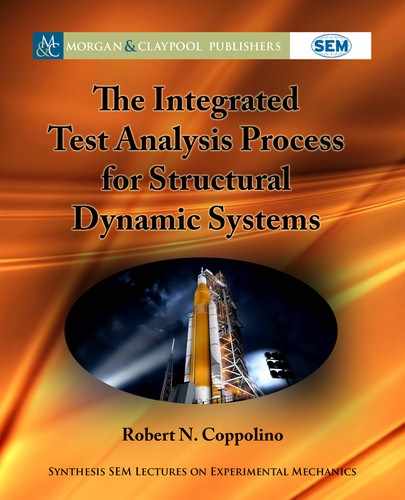4.3. REFERENCES 83
e reduced cumulative coherences in the 30–35 Hz frequency band were judged pro-
vide additional evidence of test article nonlinear behavior, which was noted in preliminary data
analysis results summarized in Figure 4.7.
4.2.7 CLOSURE
Systematic techniques for estimation of FRFs associated with single and multiple excitation
resources, due to Bendat and Piersol, provide a sound foundation for detailed measured analy-
sis of measured time history records. Automation and reinterpretation of triangular (Cholesky)
decomposition of the excitation cross-spectral (frequency dependent) matrix leads to a straight-
forward, unambiguous cumulative coherence function family. e cumulative coherence family
provides insight into the role played by each individual excitation (which is not necessarily com-
pletely uncorrelated with the other excitation sources). Benefits offered by cumulative coherence,
as demonstrated with modal test data records, include: (1) further confirmation and localization
of ISS P5 test article behavior (noted in preliminary data analyses) and (2) confirmation of ISPE
test article linear behavior, along with determination of the relative prominence of modal test ex-
citation resources. In addition, employment of cumulative coherence facilitates characterization
of “algebraic” nonlinear systems as demonstrated in testing of a wire rope shock and vibration
isolator.
4.3 REFERENCES
[1] J. S. Bendat and A. G. Piersol, Random Data Analysis and Measurement Procedures, 4th
ed., Wiley, 2010. DOI: 10.1002/9781118032428. 65, 66, 67, 68, 69, 70, 75, 77
[2] J. S. Bendat, Nonlinear Systems Techniques and Applications, 2nd ed., Wiley, 1998. 70, 72,
75
..................Content has been hidden....................
You can't read the all page of ebook, please click here login for view all page.
